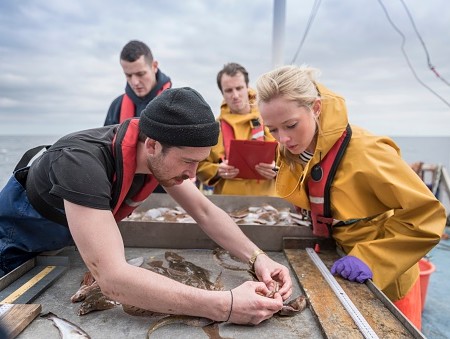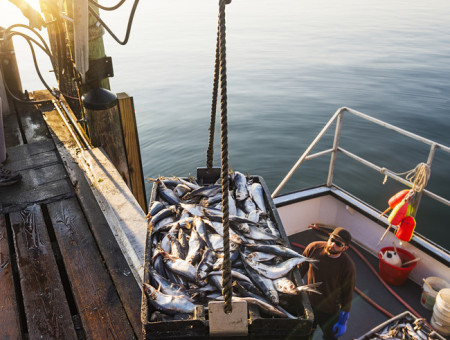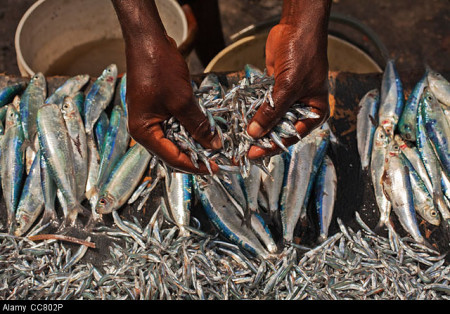 The Data-Limited Methods Toolkit (DLMtool) is a freely-available, open-source software package that uses computer simulations of real-world fisheries to help scientists and managers with three common objectives: 1) identifying the most effective management methods given the uncertainties associated with data-limited fisheries, 2) computing explicit management guidance based on the best-available data, and 3) prioritizing future data collection programs.
The Data-Limited Methods Toolkit (DLMtool) is a freely-available, open-source software package that uses computer simulations of real-world fisheries to help scientists and managers with three common objectives: 1) identifying the most effective management methods given the uncertainties associated with data-limited fisheries, 2) computing explicit management guidance based on the best-available data, and 3) prioritizing future data collection programs.
Management Strategy Evaluation
The Toolkit contains an integrated management strategy evaluation function to identify acceptable harvest control rules based on user-specified stock type, fishing fleet, management type, and performance criteria. As the name suggests, management strategy evaluation (MSE) is the process of evaluating the performance of alternative management strategies, which in this case are comprised of management procedures for data-limited fisheries. Real world experiments in fisheries management are extremely difficult, primarily because two of the most important components of an experiment, replication and control groups, are usually not possible. For this reason, comparison and evaluation of the performance of alternative fisheries management procedures are conducted with computer simulation, with models that are conditioned on the existing knowledge of the target stock dynamics, the characteristics of the fishing fleet, and the existing management framework. With the aid of computer simulation, it is possible to run many hundreds of simulation runs – each representing a different possible “reality” – and to take into account the uncertainty in knowledge of the stock and fishery (i.e., errors in observation) as well as the uncertainty in future environmental and ecological conditions that are likely to affect the stock dynamics. Through these simulations, DLMtool users can see the relative impacts of specified management approaches to their fishery decades into the future and choose the approach that best achieves their management objectives.
 Real-World Management Recommendations
Real-World Management Recommendations
Armed with this understanding of what methods perform best, the user then enters all available data for a particular stock through a simple spreadsheet interface. The Toolkit recognizes which of the acceptable methods can be applied with the data for that stock and then applies them, generating explicit guidance for fisheries managers.
Value of Information (Prioritizing Future Data Collection)
Diagnostic tools show what data inputs a particular method is sensitive to, allowing closer scrutiny of the quality of those inputs. The Toolkit also informs future data collection priorities by analyzing what additional data are needed to run better performing, but currently unavailable methods.
Features & Benefits
Over 85 Data-Limited Methods: dozens output controls (e.g., total allowable catch) and input controls (e.g., spatial, effort, size), ranging from simple, data-poor management procedures to data-rich assessment models
Robust Testing of Data-Limited Methods: Quantify and compare the performance of a broad and extensible range of alternative management methods (e.g., probability of meeting limit/target reference points, long- and short-term yield, stability in yield, etc.) using management strategy evaluation (MSE)
Application of the Best Available Methods: Input real data from your fishery and obtain real management recommendations that are calculated using the same management procedures that were identified in the MSE
Powerful and Rapid Execution: Pre-tested code and parallel processing for speed and efficiency; can be linked to online supercomputer services to make large simulations accessible
Improves Data Collection: Prioritizes the most valuable data to collect, ensuring the biggest bang for the management buck
Open Access: Free R software package enables users to share code for easy collaboration
Saves Time & Money: Improve the power, precision, and efficiency of scientific throughput (requiring a day or two to complete analyses that would normally take weeks), use pre-tested computer code (avoiding duplicative effort writing code) and enhance reliability (avoiding review time wasted on bugs)
Prefab Operating Models: Includes a range of pre-build stock (12), fleet (13), and observation objects (6) for constructing and adapting operating models
Customizable: Quickly add new management procedures, performance metrics, and fishery operating models that represent the real fishery system and accommodate an ever-expanding universe of fishery management problems
Clarity & Transparency: Provides clarity in decision-making and promote transparency, credibility, and increased buy-in from stakeholders; includes functions for graphing and presenting results (e.g., trade-off plots, rebuilding worm plots, value of information plots, convergence diagnostics)
 7 Steps for Using the Toolkit
7 Steps for Using the Toolkit
Step 1: Tailor the Toolkit’s operating model to your fishery by specifying the species, fishing fleet, and degree of observation error – or create your own from scratch
Step 2: Define your management objectives: choose the performance metrics that you will use to evaluate different management strategies
Step 3: Test different management approaches through simulation (management strategy evaluation) and analyze their impacts to the fishery now and decades into the future
Step 4: Identify which high-performing management strategies can be applied to your fishery given your available data
Step 5: Apply the best available management strategies to your fishery
Step 6: Make a management recommendation
Step 7: Investigate the value of improving your information: explore how improving your existing data could enhance the performance of your favored methods and identify which data types could most economically expand your choice of management strategies